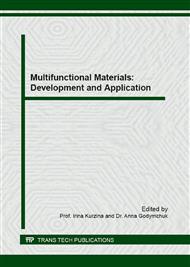p.555
p.563
p.569
p.576
p.583
p.589
p.596
p.601
p.609
Molecular Dynamics Simulation of Pd and PdH Structure
Abstract:
For materials, science it is important to study the structure and behavior of matter at the deepest level. Currently, modern microscopes allow one to see the atomic structure of matter. Materials should be prepared in a special way, for research in the microscope, but thus the natural structure of the material may changed. Especially, the processes at the atomic level are difficult to explore. In a computer model of matter, one can account the properties of atoms and even its electron structure. In this paper, by molecular dynamics method the structure and evolution of the palladium and its compounds with hydrogen are investigated. In the work equilibrium structure of the crystal lattice of palladium was obtained and determined the equilibrium lattice parameter at different temperatures. The behavior of the hydrogen atom inside the crystal lattice of palladium was studied. The structural and diffusion properties system palladium-hydrogen were obtained
Info:
Periodical:
Pages:
583-588
Citation:
Online since:
February 2016
Authors:
Price:
Сopyright:
© 2016 Trans Tech Publications Ltd. All Rights Reserved
Share:
Citation:


